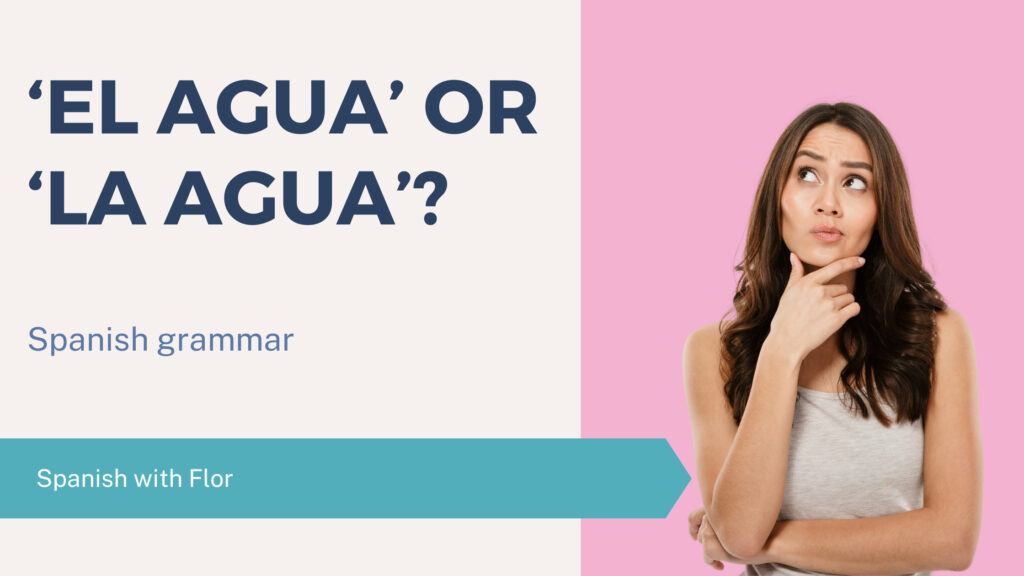If you’ve ever taken Spanish classes, you’ve probably come across the word “agua“. It’s a simple enough word, meaning “water” in English. However, what might have struck you as odd is that “agua” takes the article “el” in Spanish. This might seem strange, especially since it is a feminine noun. In this article, we’ll explore how to write “agua” in Spanish.
In Spanish, all nouns are either masculine or feminine, and “agua” happens to be feminine. One of the most interesting things about “agua” is that it changes gender when it becomes singular. In the singular form, “agua” is masculine and takes the article “el“. However, in the plural form, “agua” takes the article “las“. This might seem strange, but it’s actually consistent with Spanish grammar rules. In this article, we’ll explore this and other interesting facts about “agua” in Spanish.
Key Takeaways
- “Agua” is a feminine noun in Spanish.
- In Spanish, all nouns are either masculine or feminine, but can be written with both articles depending on the number (plural or singular)
- In the case of “agua,” it takes the masculine article “el” when used in the singular form, and the feminine article “las” when used in the plural form. This means that you would use “el agua” (the water), but “las aguas” (the waters).
Why is “agua” masculine in singular form?
This noun is feminine. Since it begins with a stressed /a/, it requires the use of the definite article “el” if there is no other word between the two elements. This is the reason behind using ‘el’ before ‘agua’ when ‘agua’ is a feminine noun in Spanish. For example: “el agua dulce”. However, adjectives must be in the feminine form. For example:
- El agua fría. (The cold water)
- El agua salada. (The salty water)
- El agua estancada. (The stagnant water)
As for the indefinite article, although it is not considered incorrect to use the full form “una“, today the use of the apocopated form “un” is the preferred form. For example:
- Un agua con gas. (A sparkling water)
The rest of the determiners must be in the feminine, for example:
- Esta agua. (This water)
- Toda el agua. (All the water)
- Mucha agua. (A lot of water)
Stressed ‘A’ in Singular Form Nouns in Spanish
Nouns that begin with a stressed /a/ sound take the masculine article in Spanish, regardless of whether they end in “a”. Some of the words include:
- “el águila” (the eagle) instead of “la águila”
- “el alma” (the soul) instead of “la alma”
- “el arma” (the weapon) instead of “la arma”
- “el hacha” (the axe) instead of “la hacha”
However, it’s important to note that this rule only applies to the singular form of the noun. In the plural form, “agua” reverts back to its feminine gender, and you would use:
- “las aguas” instead of “los aguas.”
- “las águilas” instead of “los águilas”
- “las almas” instead of “los almas”
- “las armas” instead of “los armas”
- “las hachas” instead of “los hachas”
Pronunciation and Gender in Spanish
It is important to maintain gender consistency across number and cases in Spanish. In the case of “agua,” it is a feminine noun, but it takes the masculine article in the plural form. This is due to the phonetic structure of the word. The letter “a” in “agua” is stressed, and when it is combined with the feminine article “la,” it creates a sound clash. To avoid this, and enhance euphony, the masculine article “el” is used instead.
This phenomenon is not unique to “agua.” There are other feminine nouns in Spanish that become masculine in the singular form, such as “el águila” (the eagle) and “el arma” (the weapon).
If you are looking to start your Spanish learning, I can help you!
Join the Spanish with Flor Basic Spanish Course where I will teach you all the basics to kickstart your Spanish!


